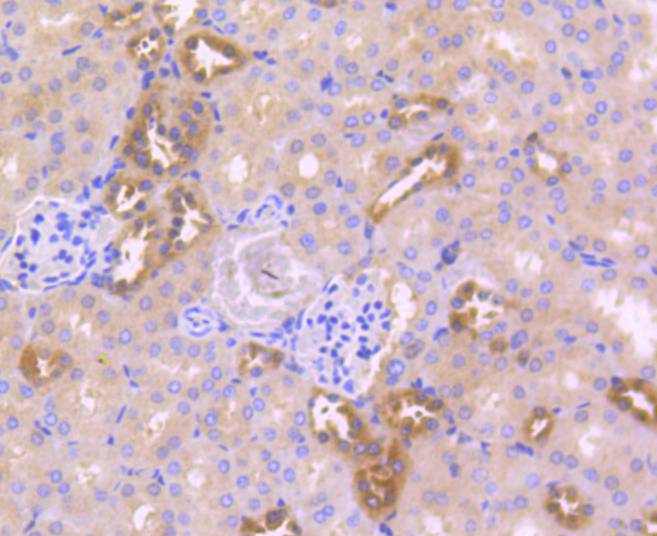Product Detail
Product NameCaspase-6 Rabbit mAb
Clone No.SC56-09
Host SpeciesRecombinant Rabbit
Clonality Monoclonal
PurificationProA affinity purified
ApplicationsWB, ICC/IF, IHC, IP
Species ReactivityHu, Ms, Rt
Immunogen Descrecombinant protein
ConjugateUnconjugated
Other NamesApoptotic protease Mch-2 antibody Apoptotic protease MCH2 antibody CASP-6 antibody CASP6 antibody CASP6_HUMAN antibody Caspase 6 antibody Caspase 6 apoptosis related cysteine protease antibody Caspase 6, apoptosis related cysteine peptidase antibody Caspase-6 subunit p11 antibody Mch2 antibody OTTHUMP00000162742 antibody OTTHUMP00000162743 antibody
Accession NoSwiss-Prot#:P55212
Uniprot
P55212
Gene ID
839;
Calculated MW11/33 kDa
Formulation1*TBS (pH7.4), 1%BSA, 40%Glycerol. Preservative: 0.05% Sodium Azide.
StorageStore at -20˚C
Application Details
WB: 1:1,000-1:2,000
IHC: 1:50-1:200
ICC: 1:50-1:200
Western blot analysis of Caspase-6 on different lysates using anti-Caspase-6 antibody at 1/1,000 dilution. Positive control: Lane 1: Mouse colon Lane 2: MCF-7
Immunohistochemical analysis of paraffin-embedded human breast carcinoma tissue using anti-Caspase-6 antibody. Counter stained with hematoxylin.
Immunohistochemical analysis of paraffin-embedded human kidney tissue using anti-Caspase-6 antibody. Counter stained with hematoxylin.
Immunohistochemical analysis of paraffin-embedded mouse kidney tissue using anti-Caspase-6 antibody. Counter stained with hematoxylin.
ICC staining Caspase-6 in SW480 cells (green). The nuclear counter stain is DAPI (blue). Cells were fixed in paraformaldehyde, permeabilised with 0.25% Triton X100/PBS.
A unique family of cysteine proteases has been described that differs in sequence, structure and substrate specificity from any previously described protease family. This family, Ced-3/caspase-1, is comprised of caspase-1, caspase-2, caspase-3, caspase-4, caspase-6, caspase-7 (also designated Mch3, ICE-LAP3 or CMH-1), caspase-9 and caspase-10. Ced-3/ caspase-1 family members function as key components of the apoptotic machinery and act to destroy specific target proteins which are critical to cellular longevity. Poly(ADP-ribose)polymerase plays an integral role in surveying for DNA mutations and double strand breaks. Caspase-3, caspase-7 and caspase-9, but not caspase-1, have been shown to cleave the nuclear protein PARP into an apoptotic fragment. caspase-6, but not caspase-3, has been shown to cleave the nuclear lamins, which are critical to maintaining the integrity of the nuclear envelope and cellular morphology. Caspase-10 has been shown to activate caspase-3 and caspase-7 in response to apoptotic stimuli.
If you have published an article using product 48936, please notify us so that we can cite your literature.







 Yes
Yes



